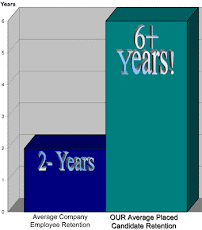
Many smart business leaders are now trying to plan for changes to continue growing.
Darwin wrote, “It is not the strongest of the species that survive, nor the most intelligent, but the one most responsive to change.” The companies that will emerge stronger in 2009 are those that adapt to change by identifying internal and external opportunities for innovation.
Cost cutting is not innovation
Circuit City, Bed Bath & Beyond, The Bombay Company and Sharper Image all failed in 2008. Despite their successful histories, all had stopped innovating, preferring instead to focus on cost cutting and supply chain efficiency. They lost track of customer trends, and customers in turn felt no loyalty to these retailers. Instead they went looking for the cheapest competitor that offered the same, or similar, products. Even the low-cost leader in retail, Wal-Mart, grew only 3% in 2008, continuing its decade-long revenue stagnation trend. Despite low prices, Wal-mart customers are indicating they do not intend to remain long-term customers. They are looking for more innovative retailers to emerge with more new products.
Innovation case study
While Domino’s is a large chain, its franchisees compete one restaurant at a time on individual street corners. In late 2008, Domino’s recognized that continuing the price war and “product of the month” practices in its primary pizza business was destroying results. Cost cutting wasn’t enough for its franchisees to succeed. Competitors such as Little Caesar’s had dropped prices to $5 per pizza, while Pizza Hut had offered steep discounts monthly.
Domino’s looked for a new opportunity and decided on toasted sandwiches. Although this wan an entirely new venture, Domino’s franchisees chose to target Subway’s as their new arch competitor.
Domino’s shifted its focus to sandwiches from pizzas to grow revenues. A radical change in focus like this demonstrates a disruption that overturns the traditional core focus in an attempt to embrace change rather than avoid it.
Domino’s created several franchisee “test beds” in which they tried various product combinations, perfecting what they would later sell. These field tests honed a workable growth vehicle to which all stores could evolve.
Barriers to innovation
To begin the innovation process in your company, consider these common barriers to innovation:
1. Lock-in. “Lock-in” describes an organization’s dogged commitment to business models, products, behaviors, processes and perceived benefits. Lock-in is beneficial because its standard operating procedures create efficiency within a company and drives growth as long as the success formula is working. However, when the market changes, rigid adherence to lock-in will stifle innovation and sink a company.
2. Defend and extend management. This is a practice of defending core values, procedures, services, products and customers, and seeking incremental opportunities to grow by extending those cores. Practitioners of defend and extend management view innovations as threats and are often late to adapt to market changes.
The first step to better results is to recognize what we lock into, how we lock-in and why we cling to defensive management practices. Only the disruption of these practices will lead to an effective turn-around.
Polaroid’s locked-in success formula was selling “instant photography.” The company generated double digit growth and high profits from the late ‘50s to early ‘70s. When the value of instant photos declined--initially due to low-cost one-hour photo processing--Polaroid continued looking for ways to defend its business by making smaller, cheaper cameras and film that processed more quickly. Eventually, Polaroid tried to maintain itself by extending into specialized products such as the “big shot” portrait camera designed just for close-up images, and a large-format camera designed to photograph business documents. These defend and extend actions missed the market shift to fast, cheap film processing which eventually made Polaroid obsolete. Polaroid needed to move to digital photography, where it held several patents, but its lock-in to old products and practices kept it from changing.
4 steps to successful innovation
Successful innovation requires that your company promote and adapt to those things the marketplace rewards. Here’s a four-step strategy to drive innovation within your company and industry:
1. Stop defend and extend strategies. Instead of focusing on core products, core services, core markets, core business practices and core technologies, which seems the natural thing to do, focus on future scenarios. Scenario planning can identify innovations and their future value.
Example: Intel was a memory chip company when leadership developed future scenarios showing that memory chips were headed for low margin price wars. Alternative scenarios identified microprocessors as having far better margins and more competitive advantages.
2. Attack competitors’ lock-in. Focusing on competitors’ lock-in shows how to put them at risk, and it also surfaces your own lock-in situation and how to manage it. You can find new innovations and the incentive to develop them by attacking your competitors’ lock-in. Nothing helps to motivate your team like attacking an arch-nemesis with a new plan.
Example: The small Chicago pasta maker Fould’s realized that the giant corporation New World Pasta was taking over grocer shelves. But New World was locked-in to traditional products and retailers. Fould’s identified an opportunity for low carbohydrate and no-gluten products that New World was ignoring. Switching to these initially smaller but faster growing and higher margin products allowed Fould’s to expand distribution and succeed despite the entry of a mega-player into its traditional market.
3. Create Disruptions. When launching an innovation, it’s critical to create internal disruptions which overturn old lock-ins. Disruptions are not problems caused by market changes. Disruptions are internally generated decisions to attack lock-in and reassess the status quo.
Example: When Louis Gutierrez, then chairman of Kellogg’s, announced he was going to convert the company’s oldest manufacturing plant into an R&D center, everyone realized that the company was changing its competitive positioning from low cost cereal manufacturing toward new products. When Gutierrez said people would be measured on dollars, not volume, employees knew they had to change their behavior. Disruptions energized everyone to rethink how they could create a more profitable Kellogg’s.
4. Create and maintain “white space.” Innovators must have their own place/space and mandate to develop new success formulas, aligned with new market requirements. They must have permission to operate outside of and even violate corporate lock-ins. And they need sufficient resources of manpower and money, even if this means taking some of the budget from the traditional business.
Example: Over the last 25 years, Illinois Tool Works has grown several-fold, while maintaining high profitability, in ostensibly low-margin industrial products markets by constantly opening new projects in new markets. Today ITW has over 700 profitable subsidiaries in dozens of vertical markets using dozens of technologies all over the world.
All companies can adapt to today’s changing markets. Although in tough times the gut reaction may be to “protect the core,” it is innovation which leads to long-term sales growth and higher profits. Those who move quickly to adopt innovation, becoming part of the market shift, will come out stronger and more successful.
-Adam Hartung is president of Spark Partners which helps organizations reinvigorate growth, innovation and breakthrough performance. He is author of the book “Create Marketplace Disruption” and he blogs regularly about how to overcome Lock-in and improve performance at http://www.ThePhoenixPrinciple.com














No comments:
Post a Comment